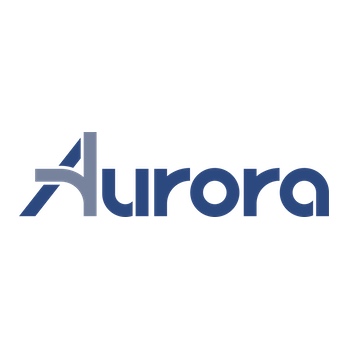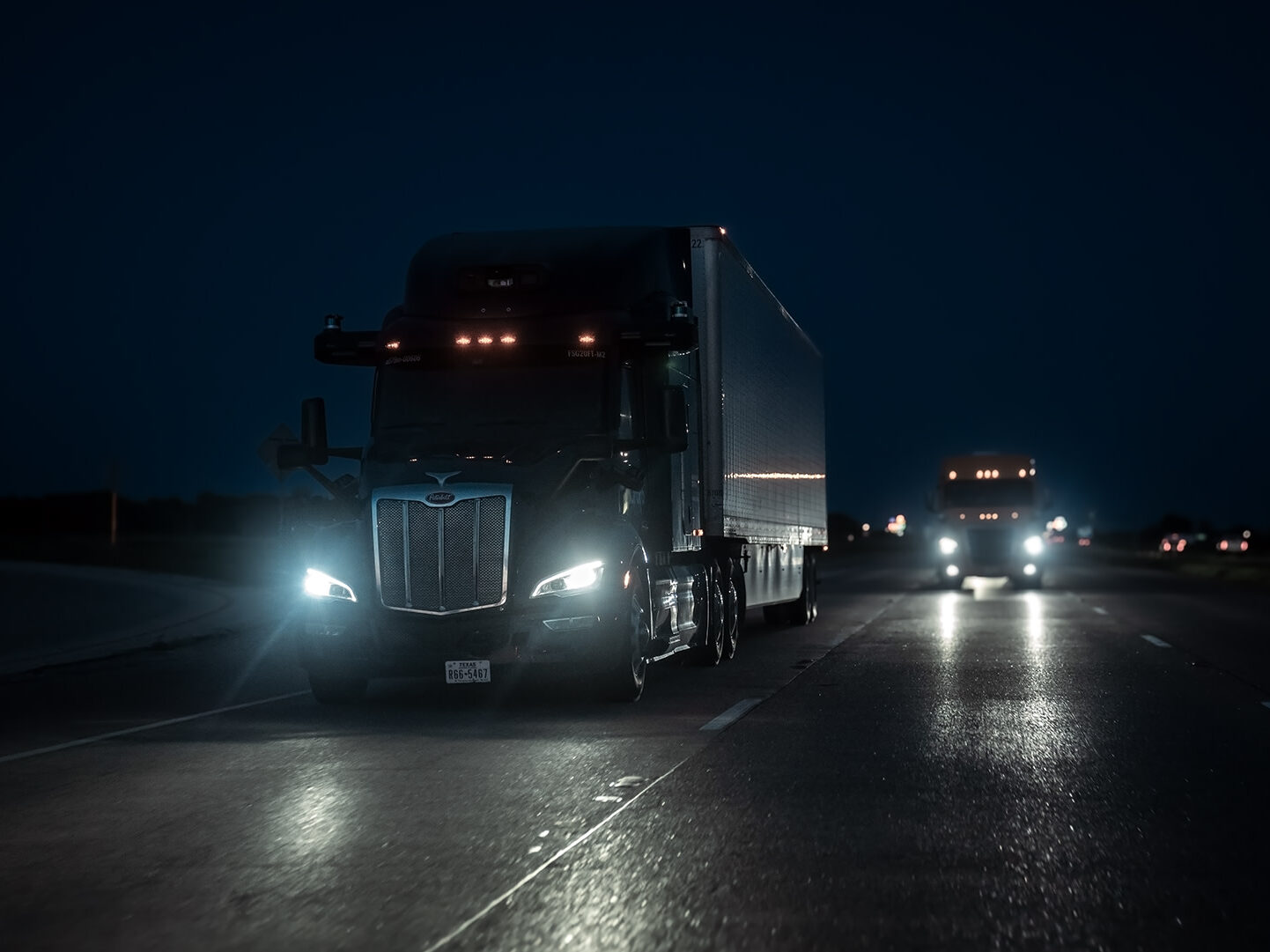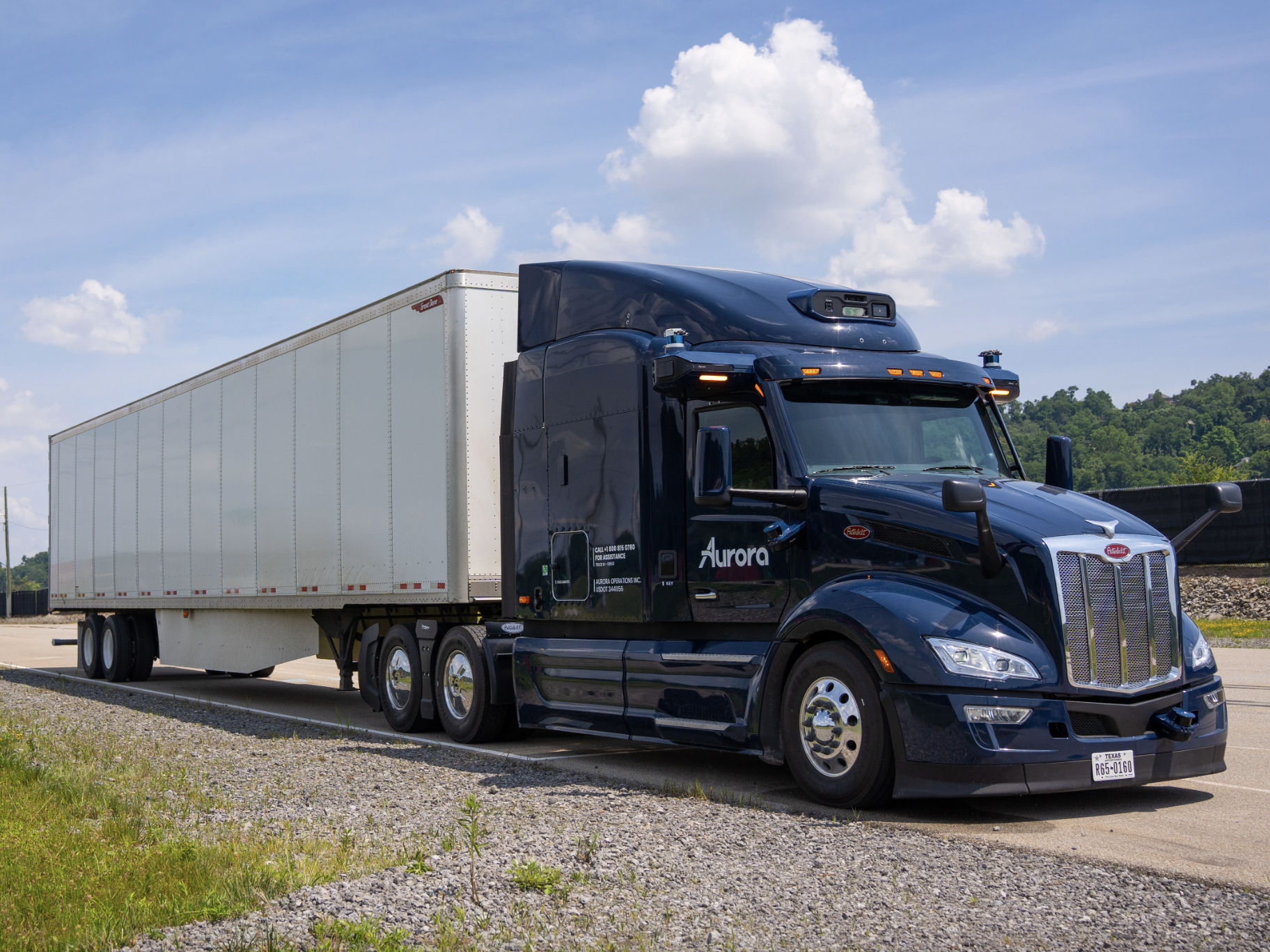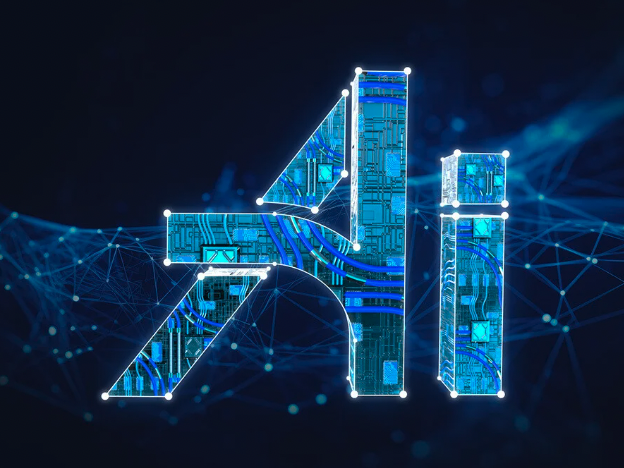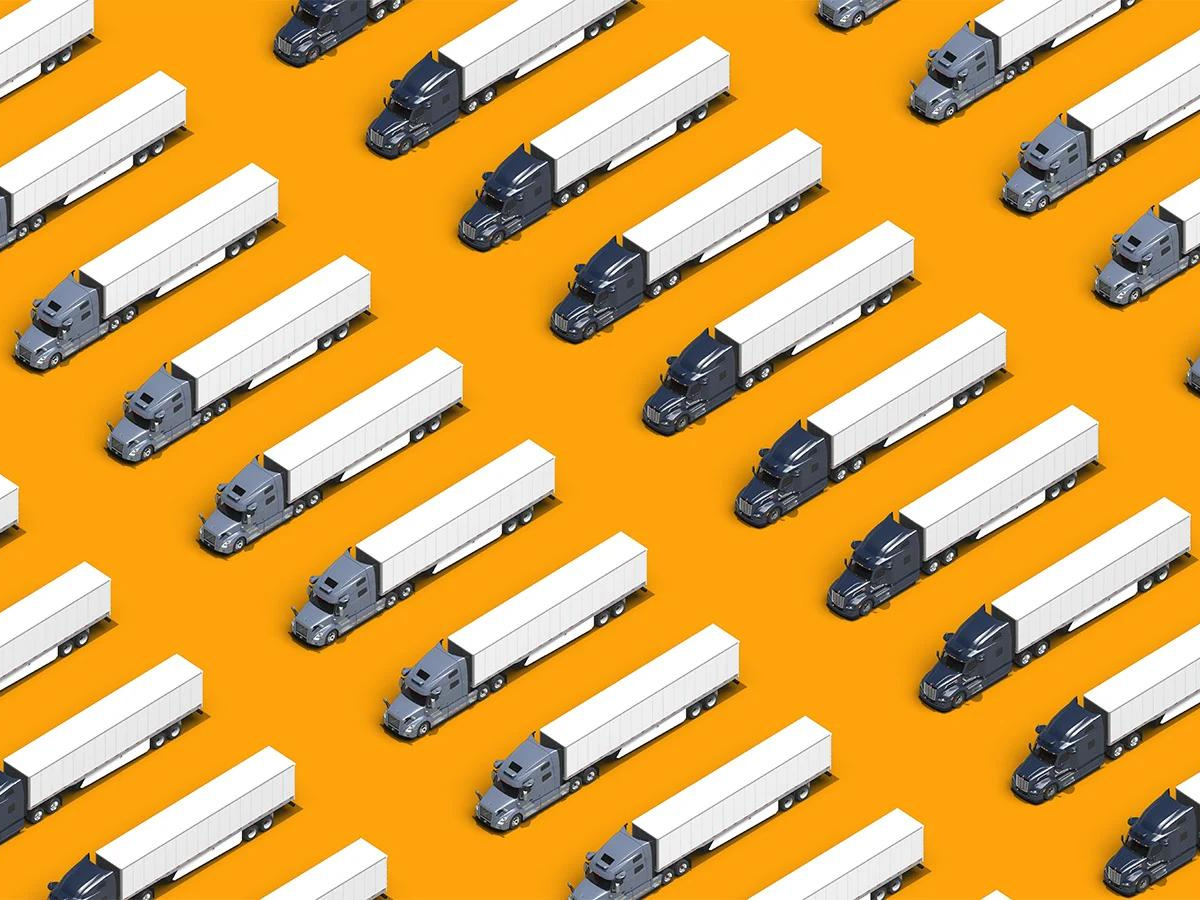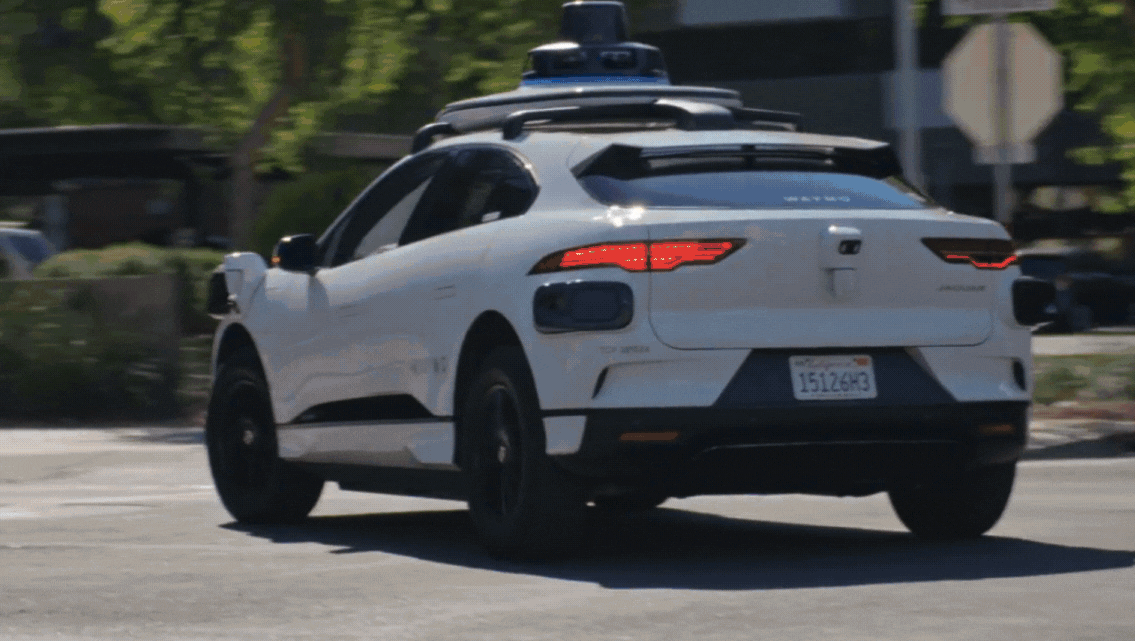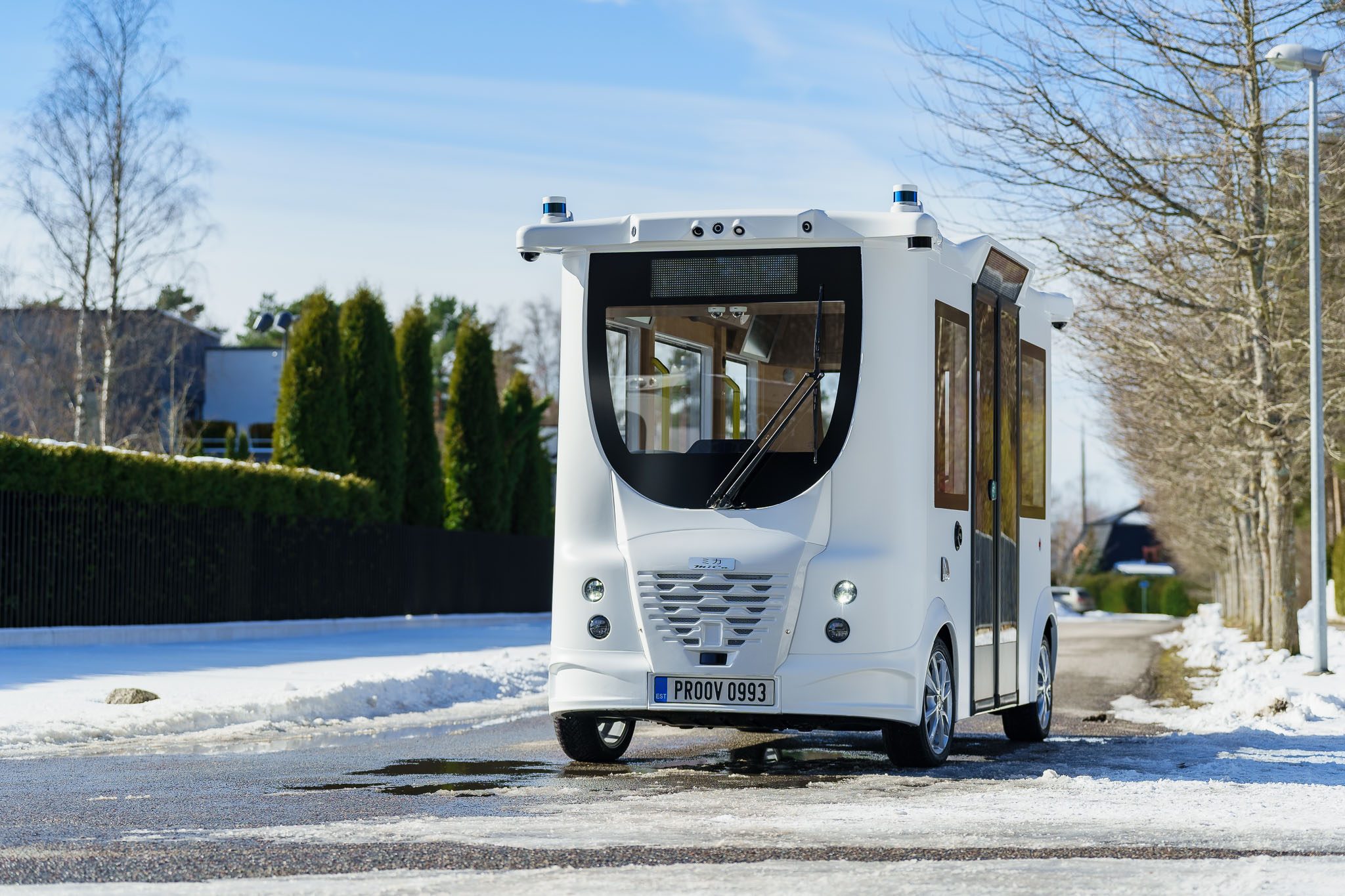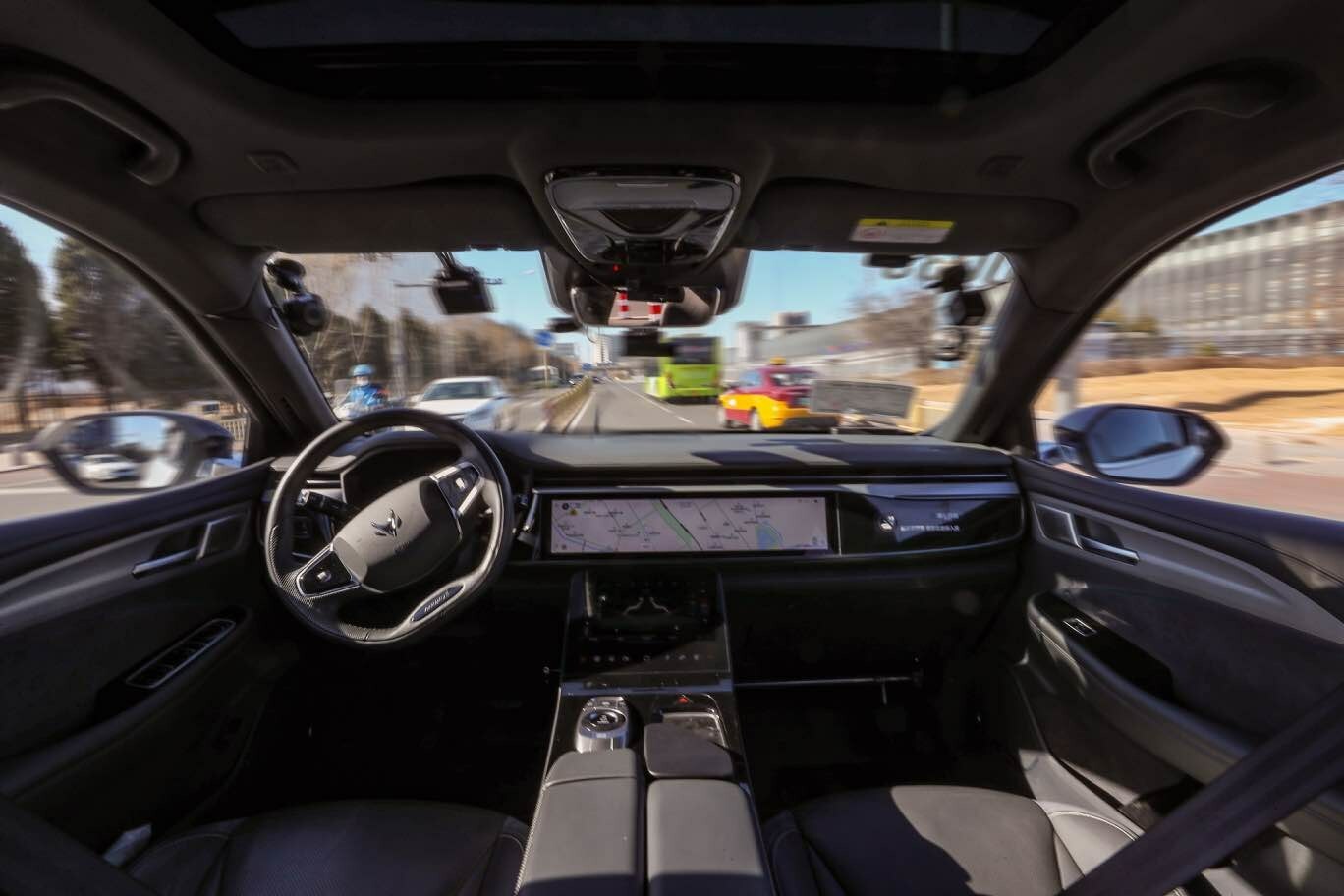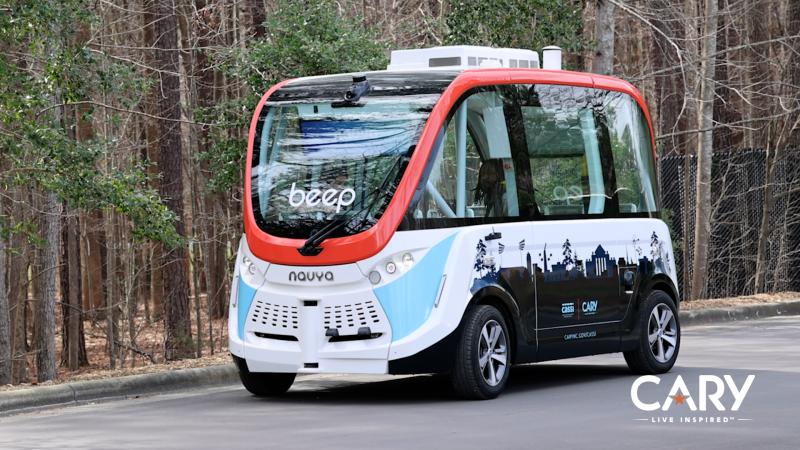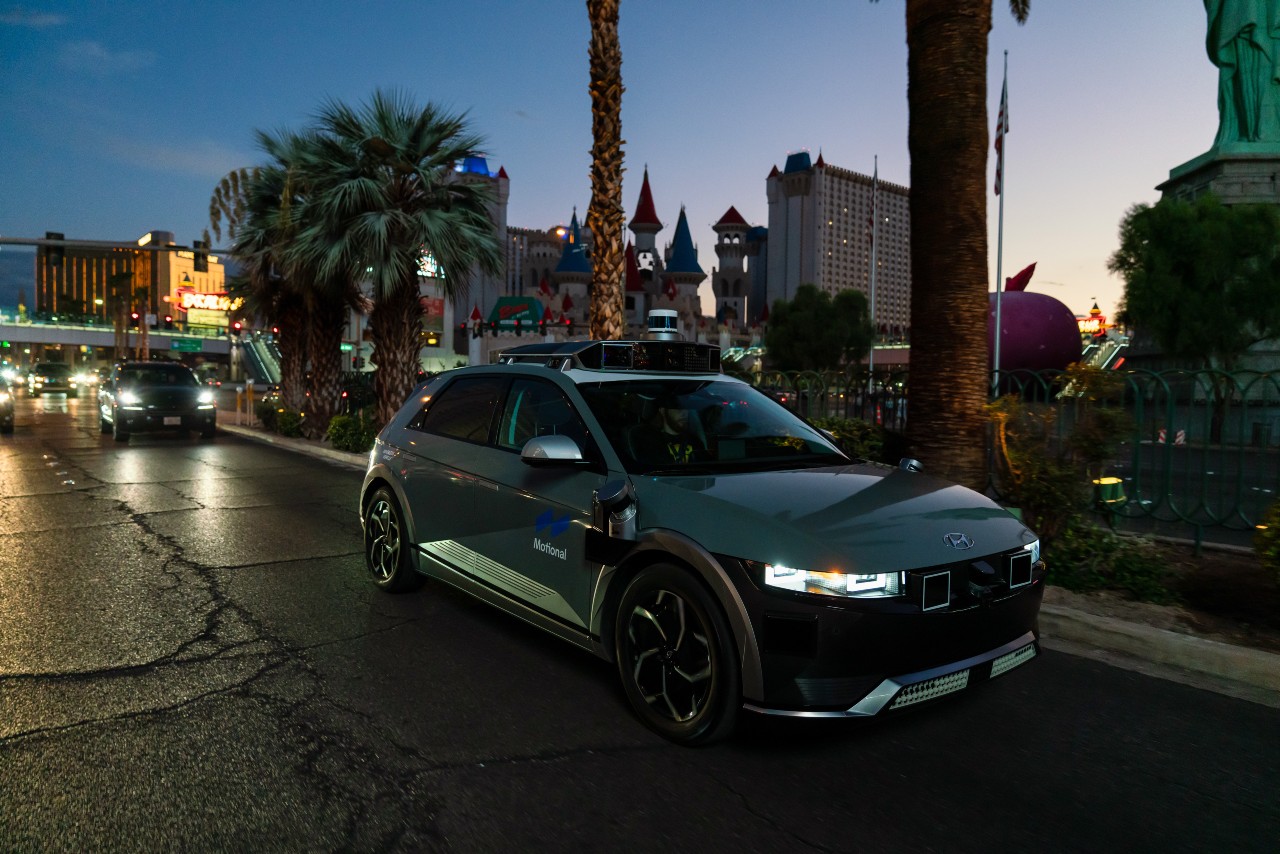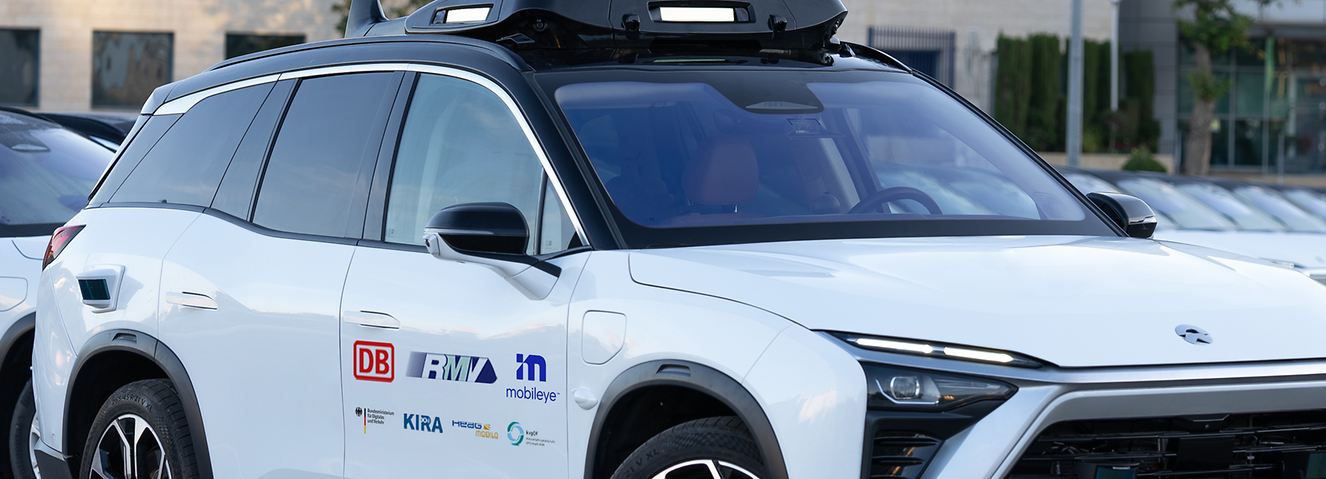Today I’m thrilled to announce that we’ve entered the final phase of development for the product we plan to launch commercially next year.
The Aurora Driver is new, exciting, and impressive in its complexity. But while the product itself is complex, its development leverages a time-tested approach that’s proven effective in the development of many similarly-challenging products through the years. Development of the Aurora Driver started with an intense, iterative cycle of early research and testing.
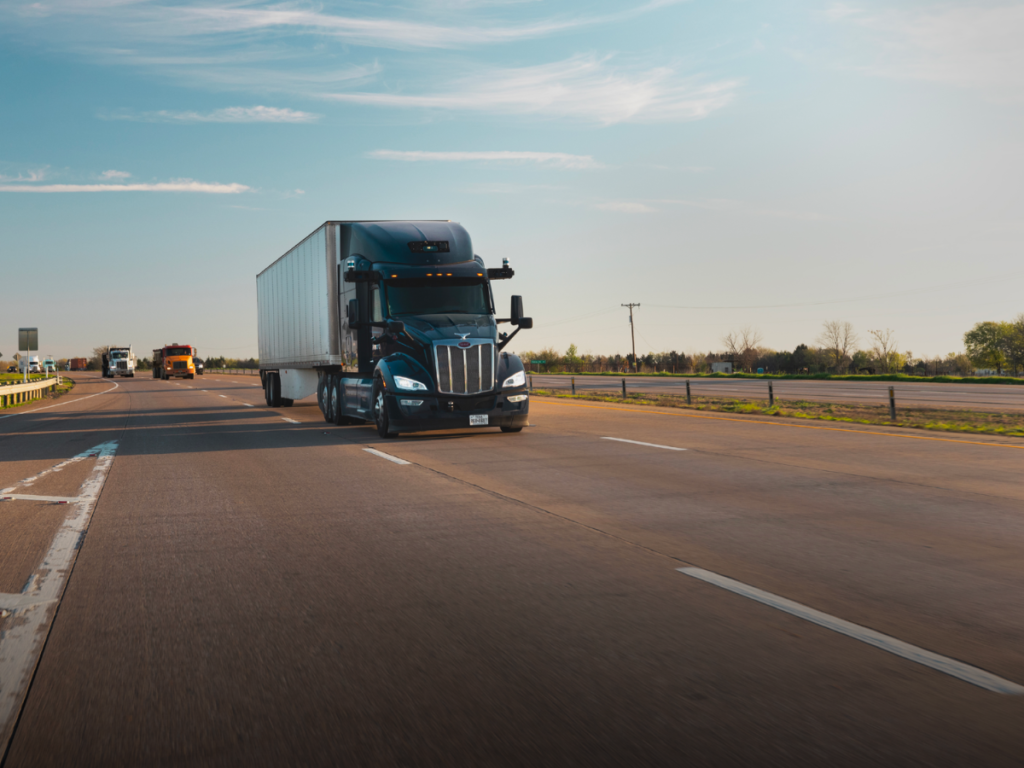
This early research enabled requirement generation, which, in turn, informed concept studies, preliminary designs, testing, and further iteration. After years of this exploratory research phase, a complete product scope, corresponding system requirements, complete technical architecture, and detailed product design have emerged.
In my experience, reaching this point in the development process marks a pronounced shift in focus from a more global exploration of the solution space to more local optimization of the identified solution family. To this point, work tends to be exploratory and timelines uncertain. Beyond it, the work becomes more deterministic and predictable as well-known issues are burned down and the product launch playbook is executed. If our product were a symphony, the last several years of our development had us collecting our thoughts, writing the piece, selecting and training the ensemble, selecting the venue, and even practicing in front of live audiences. The phase we’ve now entered is that of adjusting the dynamics of the piece and proving to ourselves that our grand opus is ready for opening night.
Beta 6.0 Is the First “Feature Complete” Version of the Aurora Driver
The Aurora Driver is now Feature Complete—meaning all policy disengagements have been removed, and we have implemented all of the technical capabilities it needs to power trucks built for it in commercial service on our Dallas to Houston launch lane. We call this autonomous trucking service Aurora Horizon.
This milestone is the culmination of six years of exploration, research, development, and focus marked and enabled by early investments in foundational hardware, software, development tools, partnerships, and operations. These investments, amplified by the incredible people and teams who’ve joined Aurora, have helped us create something that will be tremendously valuable for our customers after we’ve launched: a safe, efficient, and reliable autonomous trucking product that will improve road safety, increase fleet utilization, and reduce operating costs.
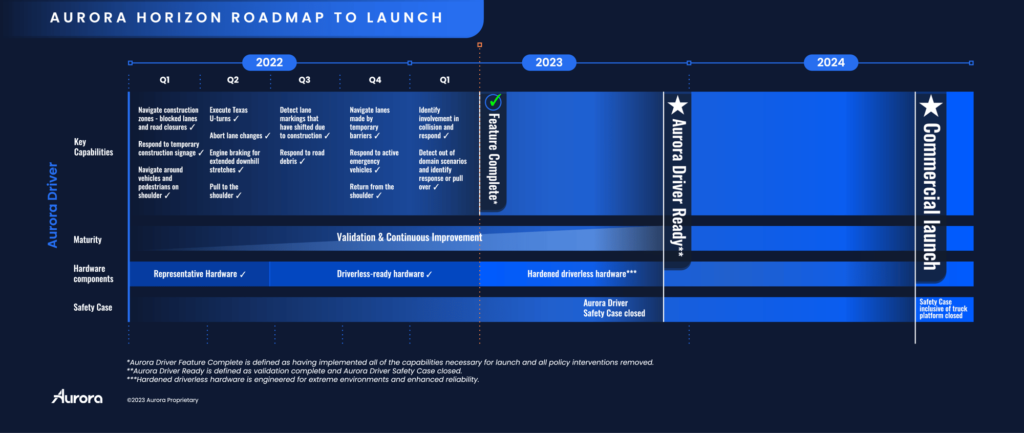
Beta 6.0
In 2021, we introduced our first Beta release of the Aurora Driver. With each release that’s followed, we’ve introduced new driving capabilities and refined existing ones, methodically equipping the Aurora Driver with the knowledge and experience we expect it to require while hauling loads for Aurora Horizon customers on our launch lane.
Beta 6.0 introduces the final driving capabilities the Aurora Driver needs to operate our end-to-end commercial service between Dallas and Houston. While previous versions of the Aurora Driver were equipped to detect and operate safely through a variety of more common roadway and weather conditions, Beta 6.0 adds the ability to detect and respond to some uncommon and infrequent scenarios it could encounter such as sudden heavy rain, snow, or fog that compromises visibility, high winds that compromise control of the truck, and collisions with other road users or objects. When these conditions are moderate, as illustrated in the video below where fog affects the truck’s ability to drive at posted speeds, the Aurora Driver will slow down, not dissimilar from what an experienced human driver would do.
When conditions become bad enough that the Aurora Driver can no longer safely and confidently drive through them even at reduced speed, it will begin searching for a safe place to stop and will alert the Command Center. Similarly, if, despite defensive driving, the Aurora Driver perceives it has been in a collision, we’ve trained it to evaluate several possible courses of action, navigate to a safe stopping location, and inform a Command Center Specialist.
As Aurora Driver-powered fleets proliferate in our customers’ respective networks, so will the rate at which they encounter interesting and unexpected roadway conditions and circumstances. By designing the Aurora Driver to detect and respond to the unexpected now, we’re working to ensure it exceeds the rigorous safety, efficiency, and reliability standards of major carriers and fleets when we deploy commercially.
What This Means Going Forward
Aurora Driver Beta 6.0 marks the first time a fleet of trucks is equipped to operate with all of the primary technical features and driving capabilities required by our commercial product—from common maneuvers like negotiating lane changes, unprotected turns, or active construction zones, to slightly less common scenarios involving scattered road debris or emergency vehicles, to rare events like collisions or extreme weather.
With the release of Aurora Driver Beta 6.0 and the achievement of our Feature Complete milestone, we’ve completed the development of our self-driving system architecture. Our focus now turns to assembling the evidence required to close the Aurora Driver Safety Case in anticipation of launching our product commercially next year. As we collect this evidence, we’ll continue to refine and validate the Aurora Driver’s performance and expand our pilot operations, which are designed to give us a clear look at the totality of our customers’ operations and our product’s role and influence in them, and allow our partners to integrate autonomous trucks into their commercial operations at ever-greater scale. To return to the symphony analogy, our next phase fine-tunes the dynamics of our performance in preparation for the grand opening. I can’t wait for you to see it.
See Aurora Horizon in action here.
This article was originally published by Aurora.


